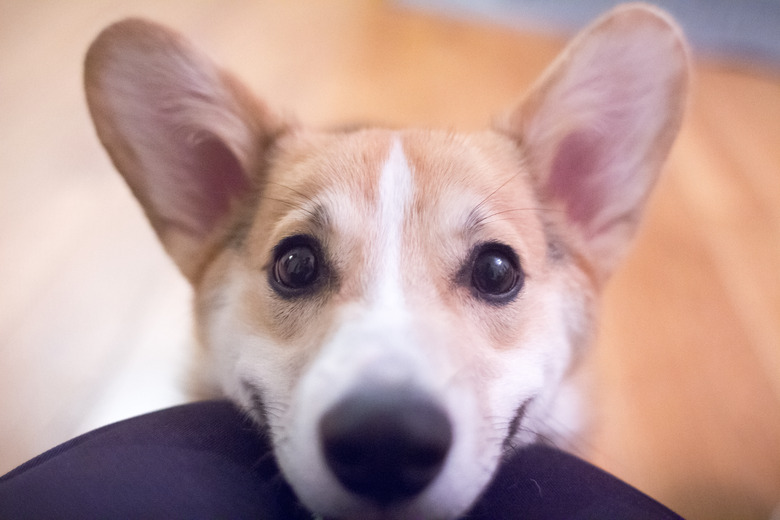Signs Your Dog Is Having Puppies Soon
Dogs have been giving birth since the dawn of time, and it's usually a straightforward process with a happy ending. Of course, it's different when your darling girl is the expectant mother. Take a deep breath and keep calm. Most dog births, or whelpings, run smoothly, and if there are issues, you have your vet's number available to call or text.
Canine gestation
Canine gestation
Dogs carry a pregnancy for about two months or an average of 63 days. By the seventh week of pregnancy, you should start making concrete preparations for the birth and keep an eye out for signs of labor. By that point, your dog is likely quite large in the abdomen, and you may see the fetal puppies moving around inside her. Other signs that birth is imminent include fluid discharging from her enlarged nipples, as per the American Kennel Club.
Taking the temperature
Taking the temperature
If you know your dog's due date, and you should unless the breeding was accidental, begin taking her temperature about a week beforehand. Normally, a dog's temperature varies between 101-to-102.5 degrees, but a pregnant dog's temperature will drop as she goes into labor. The Continental Kennel Club recommends using a digital rectal thermometer, which you insert into the dog's anus after putting a dab of petroleum jelly on the device. Take your dog's temperature mornings and evenings at the same times and record it.
When your dog's temperature drops to about 98 degrees, you can expect puppies to start arriving within 12-to-24 hours. If you haven't already put a whelping box together, get started pronto. A large cardboard box lined with newspapers and topped with old towels or blankets makes a suitable nest in which your dog can give birth and raise her babies.
If your dog's temperature drops but she doesn't go into labor within 24 hours, or if she is a week overdue with no signs of labor, contact your vet.
Early signs of labor
Early signs of labor
Signs of labor may vary with each dog, but most dogs will start panting heavily and become restless and shiver. Your normally hungry girl loses interest in food. She may exhibit nesting behavior, so make sure she knows where her whelping box is located. Keep it in a low-traffic, quiet area of the house, away from kids and other pets.
The first stage of labor lasts between six and 18 hours. Your dog may vomit or start whining or otherwise vocalizing. She's probably not in the best of moods, so keep an eye on her but otherwise leave her alone. Some dogs, however, become quite clingy with their owners as the labor pains begin.
Latter stages of labor and birth
Latter stages of labor and birth
The second stage of labor is when the puppies begin arriving. Your dog should start actively straining to give birth. As the puppy is born, the placental sac should break, leaving a yellowish fluid. Puppies should arrive in roughly half-hour intervals, although your dog may take a break of up to four hours during the birthing process.
If your dog is straining to pass a puppy for an hour or more unsuccessfully, get her and the newborns to a vet. The same holds true if more than four hours pass without an additional birth and you think there are still puppies inside her.
Just because the puppies are born doesn't mean labor is over. Your dog must still pass the puppies' placentas. Check to make sure there are as many placentas as puppies, and note if she eats any of them. As Purina points out, it's vital to contact the vet if you think there are still placentas left inside her.
Always check with your veterinarian before changing your pet's diet, medication, or physical activity routines. This information is not a substitute for a vet's opinion.
